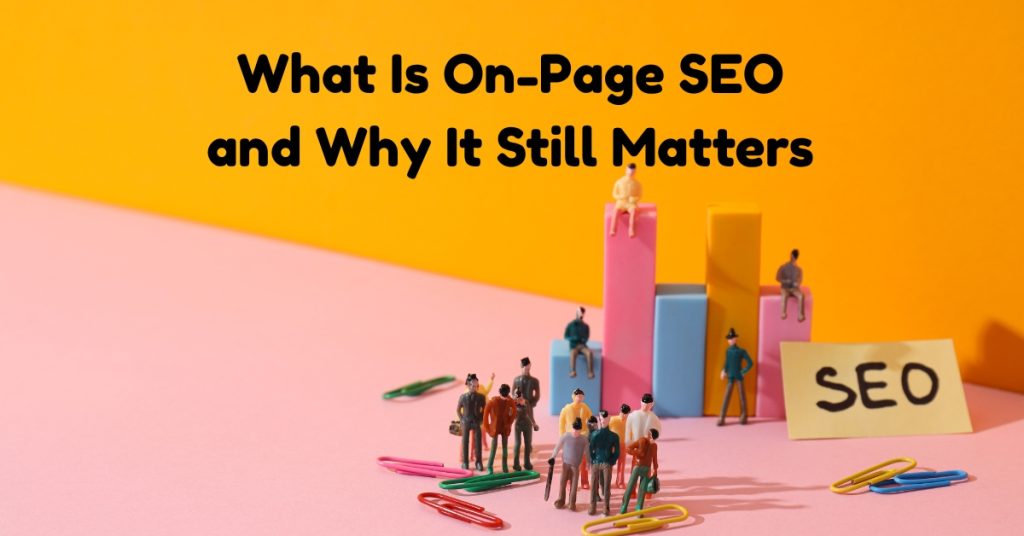When you have an online store, your product pages are where the action happens. These are the pages that bring customers in and help you make sales. But just putting up some pictures and a short description isn’t enough. If you want people to find your products on Google, you need to make your product pages better for search engines. This is called SEO, or Search Engine Optimization. Let’s break down how you can do this step by step.
1. Use Clear and Specific Product Titles
Your product title is the first thing search engines and people see. Make sure it says exactly what the product is. If you’re selling a red cotton t-shirt for kids, don’t just write “T-shirt.” Instead, write something like “Red Cotton T-Shirt for Kids – Soft and Comfortable.”
Tips:
- Include the brand name if it matters.
- Add size, color, and other details.
- Keep it under 60 characters so it doesn’t get cut off in search results.
2. Write Unique Product Descriptions
Don’t copy descriptions from other websites or the manufacturer. Write your own. Describe the product in a way that helps people picture it. Tell them why it’s good and how it solves a problem.
Tips:
- Use simple words.
- Talk about the benefits.
- Use your keywords naturally like “E-Commerce SEO San Antonio TX.”
Here’s an example: “Looking for a cozy hoodie for winter? Our thick fleece hoodie keeps you warm even on the coldest days. Made with soft material, it’s perfect for both indoor lounging and outdoor adventures.”
3. Add High-Quality Images
Photos help people understand what the product looks like. Use clear images with good lighting. Show the product from different angles. If possible, show someone using the product.
Tips:
- Use zoomable images.
- Add alt text (a short sentence that describes the image) for each photo. This helps people who can’t see the image and helps search engines too.
- Alt text example: “Red cotton t-shirt for kids, size small.”
Images make a huge difference when someone is trying to decide whether to buy your product or not. They can’t touch it or feel it, so pictures have to do that job for them.
4. Use Keywords the Right Way
Keywords are words people type into Google when looking for something. You want to include those words on your page so that Google knows what your product is.
Places to add keywords:
- Product title
- Description
- Image alt text
- URL
- Meta title and meta description
Don’t overdo it. Use the keywords naturally like: “If you’re looking for custom E-Commerce SEO San Antonio, our expert team helps improve your product pages so they rank better in Google.”
You should also think about long-tail keywords. These are longer phrases like “best cotton t-shirt for kids in San Antonio.” They may get less traffic, but the people who search them are usually more ready to buy.
5. Make URLs Simple and Clear
Your web page’s URL is what shows up in the browser. Keep it short and clean. Avoid weird numbers or codes.
Bad URL: www.shop.com/p1234?id=5678
Good URL: www.shop.com/red-cotton-kids-tshirt
This helps people understand what the page is about and makes it easier for search engines to read too.
6. Add Customer Reviews
People trust other people. Reviews help buyers make decisions. They also add more text to your page, which is great for SEO.
Tips:
- Ask customers to leave reviews.
- Show both good and not-so-good reviews (it looks more real).
- Include keywords in the review section.
Example: “This is the best winter hoodie I’ve ever bought. Fits great and keeps me warm. Thanks to the team at Professional E-Commerce SEO in San Antonio, I found this amazing deal!”
When you show that real people have bought and liked your product, new visitors will feel more confident to buy it too. Trust builds sales.
7. Include FAQ Section
Think about questions people may ask about your product. Add those questions and answers to the bottom of the page.
Example Questions:
- How do I wash this hoodie?
- Is it good for cold weather?
- Does it shrink after washing?
Why this helps:
- Gives more helpful info.
- Adds more keywords.
- Helps your page show up in Google’s Q&A boxes.
FAQ sections also keep people on your page longer, which is a good sign to search engines that your page is helpful.
8. Use Meta Titles and Descriptions
The meta title is the blue link people see on Google. The meta description is the short text under it. These tell people (and search engines) what your page is about.
Tips:
- Keep the title under 60 characters.
- Keep the description under 160 characters.
- Use action words like “Buy,” “Shop,” “Find.”
- Add your keyword.
Example: Meta Title: Red Cotton Kids T-Shirt | Soft & Durable Meta Description: Buy a comfy red cotton t-shirt for kids. Soft, durable, and perfect for playtime. Shop now with fast shipping from San Antonio, TX.
9. Make Pages Load Fast
People leave slow websites. Make sure your product pages load quickly.
Tips:
- Use smaller image file sizes.
- Avoid too many fancy animations.
- Use a good hosting service.
You can test your website speed with free tools like Google PageSpeed Insights. Faster pages mean happy visitors—and Google likes happy visitors.
10. Make It Easy to Use on Phones
Most people shop on their phones now. Make sure your product pages look good and are easy to use on small screens.
Tips:
- Use big buttons.
- Keep text readable.
- Make images fit the screen.
Your mobile site should load quickly, be easy to scroll, and let people buy without zooming in or getting confused.
11. Add Schema Markup
Schema is a special kind of code that helps search engines understand your page better. It tells them you’re selling a product, what the price is, if it’s in stock, and more.
Why it’s good:
- Helps your page stand out with star ratings, price, and availability in search results.
- You can use tools like Google’s Structured Data Markup Helper to add schema easily.
It’s like giving Google a map to your product. When Google understands your page better, it can show it to more people.
12. Internal Linking
Link your product pages to other parts of your website. For example, if someone is looking at a t-shirt, link them to matching pants or accessories.
Why this helps:
- Keeps people on your site longer.
- Helps search engines crawl your website better.
Example: “Complete the look with our blue cotton pants.”
13. Add a Clear Call-to-Action (CTA)
Tell visitors what to do next. Do you want them to buy the product? Add to cart? Sign up for updates?
Examples:
- “Add to Cart”
- “Buy Now”
- “See More Like This”
Place your CTA buttons in easy-to-see spots. Use colors that stand out but still match your brand.
14. Use Trust Signals
Trust signals help people feel safe buying from you.
Ideas:
- Show security badges (like SSL secure).
- Add customer reviews.
- Show return policies.
- Add contact information.
People want to know they’re buying from a real business. Add your phone number, business address, or even a small About Us section to build that trust.
15. Keep Updating Your Pages
SEO isn’t a one-time thing. Check your product pages regularly. Update them with new reviews, better pictures, or improved descriptions.
You can even hire a team that specializes in Professional E-Commerce SEO in San Antonio to help manage this for you. They’ll make sure your store keeps growing and showing up in Google.
Small changes, like improving a product description or updating the image, can make a big difference over time.
16. Promote Your Pages
Don’t just wait for people to find your pages. Share them on social media, email newsletters, and other websites. The more people visit your pages, the more Google sees that they’re useful.
Ideas:
- Post product links on Facebook and Instagram.
- Send out new arrivals through email.
- Ask bloggers or influencers to feature your products.
If you want a full strategy to promote your store and get more traffic, working with custom E-Commerce SEO San Antonio experts can help. They’ll create a plan that fits your store and target audience.
17. Track What’s Working
Use tools like Google Analytics to see what people are doing on your website. What pages do they visit? What products are they clicking on? Where do they leave?
Why this helps:
- You can improve the pages that aren’t doing well.
- Focus on what brings in the most traffic and sales.
Check your website reports at least once a month. It’s like looking at your store’s report card.
Final Thoughts
Optimizing your product pages is like getting your store ready before the customers walk in. You want it to be clean, helpful, and easy to use. The more effort you put into making your pages better, the more likely people will find them and buy your products.
If you’re running an online store and want help making your pages better, you can count on custom E-Commerce SEO San Antonio services. They’ll tailor everything just for your store’s needs. That way, you get more traffic, more sales, and happy customers.
Take these steps one at a time. You don’t have to do everything in one day. But each small step will help your store do better online. Good SEO is like building a strong foundation—it supports your whole business.
And if you ever feel stuck, reach out to professionals in E-Commerce SEO San Antonio TX. They’ve done it before and know how to get results.


